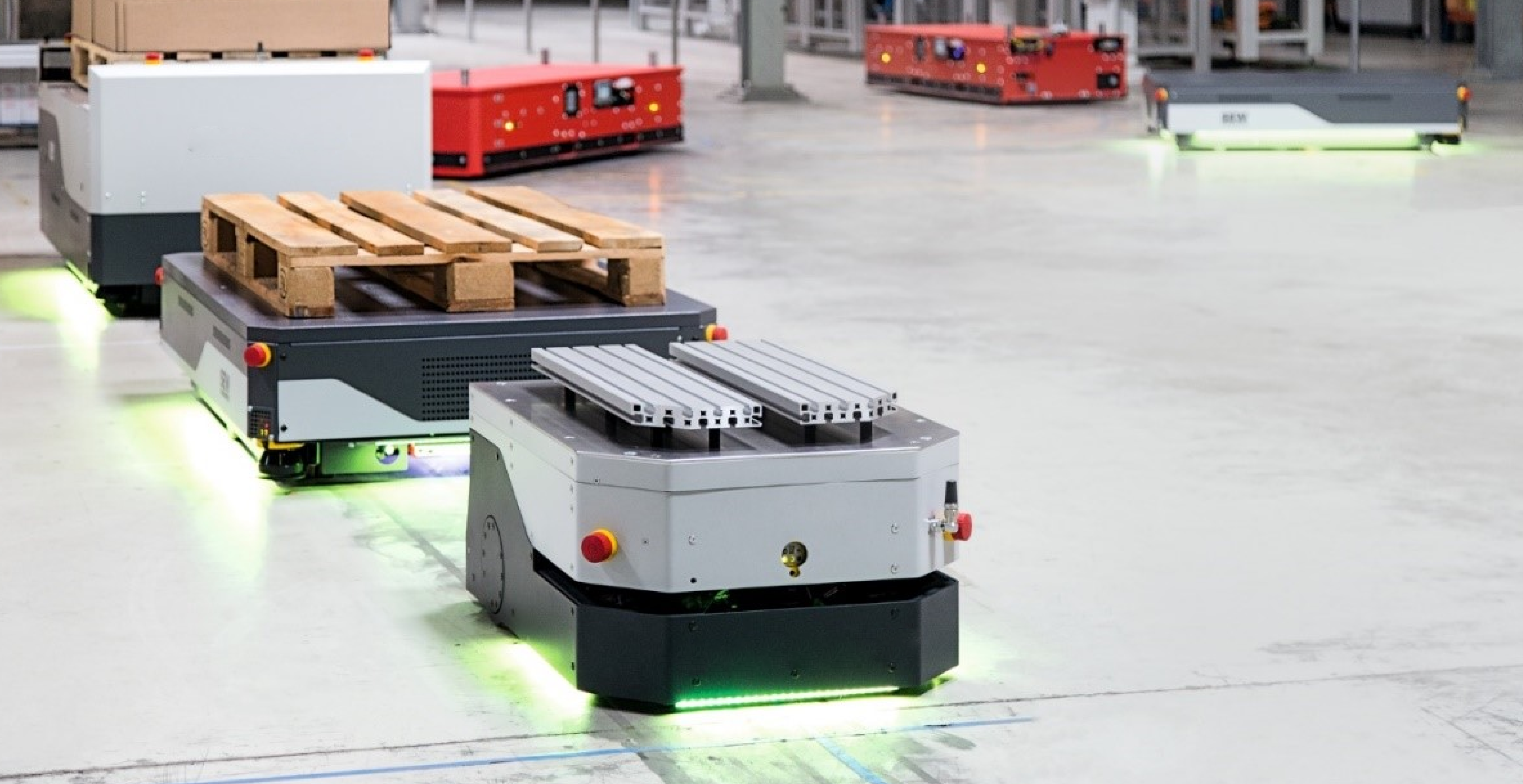Shuttle AGV trolley systems
AGVs are self-propelled vehicles whose movement is controlled by software and sensors. Most AGVs move along certain trajectories, but the most advanced ones, also called AMRs (Autonomous Mobile Robots), tend to have more advanced technology with dynamic navigation capabilities.
The main feature of autonomous trolleys, unlike classic ones, is safe and fast movement in free space. This is made possible by smart traffic control.
- Traffic control is carried out in several ways:
Zone control — AGV has a sensor that receives a signal and transmits it back to a wireless antenna installed in a certain area of the room. If the zone is free, the system allows the AGV to pass through it. If there is another AGV in the zone, a stop signal is sent. It is also possible to equip each AGV with its own transmitter, sending a “do not enter” signal to other AGVs approaching its own zone. - Collision zone monitoring — AGV, equipped with sensors that determine whether an object is in front of them. These sensors can be sound, which work like radar, or optical, which use infrared sensors. Additionally, AGVs are equipped with bumper sensors as fail-safe protection. The bumper (physical contact) sensors stop the AGV in an emergency to avoid a collision.
AGV uses zone control as its main traffic control system, and additionally has collision avoidance sensors in case of failures in the zone control system.
Principles of operation:
– movement along a predetermined trajectory of various shapes, including forks;
– maintaining a constant speed in case of maintenance of the conveyor or other objects;
– stops and continuation of movement, both in predetermined positions, and “on demand” of the operator;
– loading and unloading of transported components;
– wireless communication with other AGVs or a central terminal to create a network of trolleys moving without the participation of people;
– mapping of stationary obstacles for driving at a minimum distance;
– recognition of moving obstacles, waiting for their disappearance and continuation of work;
– navigation on the wires built into the floor;
– navigation by magnetic tape;
– inertial navigation;
– laser navigation.
AGV with platform
It is used as a loader or stacker, transports goods on its own platform. Moves along a given trajectory to the selected points. Loading / unloading of the platform is done manually or automatically, the platform itself can be raised or lowered. For automatic loading / unloading, the platform is equipped with a mechanism in the form of a roller table and / or a pusher. Suitable for warehouse logistics tasks.
AGV – towing vehicle
Works as a tractor, used to move heavy loads. Moves non-automated carts along a given path to loading/unloading points.
AGV with forks
AGV trolleys with different fork devices depending on the location of the transported goods. Our experts choose the best configuration, taking into account the physical characteristics of the object being moved (weight and dimensions). Improved positioning accuracy prevents product damage during handling.
AGV Deck Loading
In the AGV Deck Loading trolley, the pick-up device is a roller, belt or chain conveyor (the choice depends on the product being moved). The device on board allows, depending on the situation, to perform lifting, lowering, rotation and control of the transported cargo. Since this trolley can carry several load units, it is especially recommended for long distances.
AGV with telescopic forks
The AGV automatic reach truck is equipped with standard or double depth forks. AGV can have 2 or more forks with fixed or adjustable center distance.


